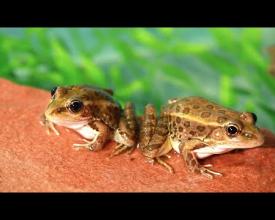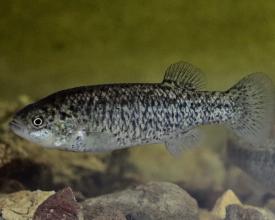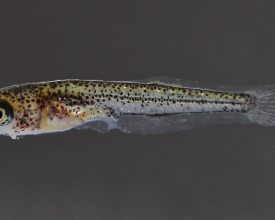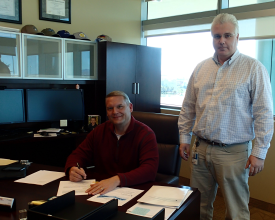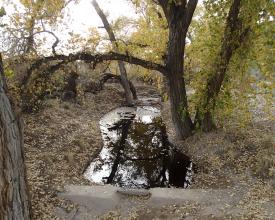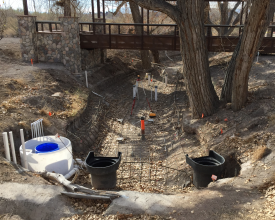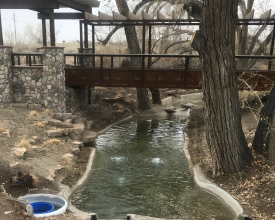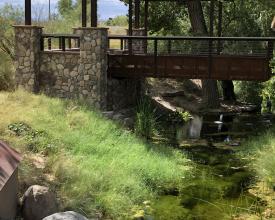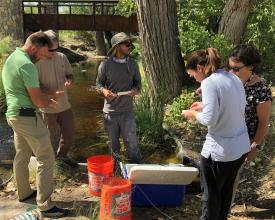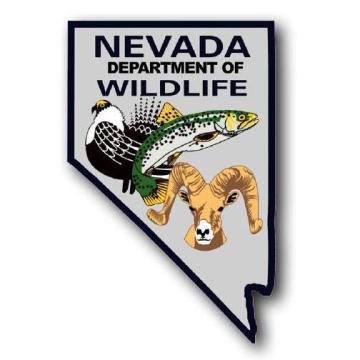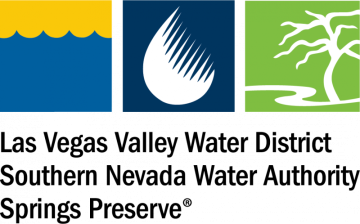
A fish out of water: Rewilding the Pahrump poolfish in Las Vegas, Nevada, USA
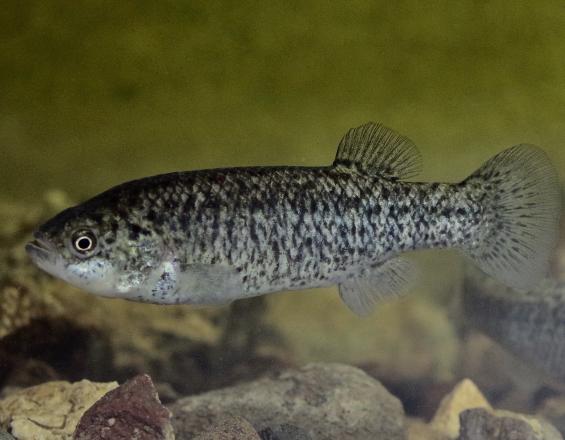
The Springs Preserve (Preserve) is a 73-ha urban park in Las Vegas, Nevada. Before 1962, three springs flowed into riparian meadows at what is now the Preserve. These springs were once inhabited by the Las Vegas dace (Rhinichthys deaconi), an extinct fish species described from museum specimens in 1984. As part of a 20-year restoration effort, ponds were constructed in the dry Las Vegas Creek bed to rewild the federally endangered Pahrump poolfish (Empetrichthys latos), a species considered critically endangered by the IUCN. This endemic fish was extirpated in 1975 from Manse Spring in Pahrump Valley, Nye County, Nevada. Although Manse Spring was lost to groundwater pumping for agriculture, some fish were translocated proactively to establish refugia populations. Recently, two of these refugia were decimated by the illegal introduction of non-native species. The establishment of a population at the Preserve further protects the species from stochastic events that can lead to extinction.
Context
Challenges addressed
The Pahrump poolfish was endemic to a single spring system in the Mojave Desert. This spring went dry decades ago because of agricultural pumping, but not before the late University of Nevada, Las Vegas professor Dr. Jim Deacon rescued and translocated a bucket of Pahrump poolfish. Our solution addresses the limited number of refugia populations in
existence by establishing an additional refugium population in a preserve with a focus on education and conservation. In addition, as a ground-breaking rewilding project, the ecological niche once occupied by the extinct Las Vegas dace is filled by a federally endangered fish in need of additional habitat.
Our focus on education brings awareness about the plight of desert fishes that inhabit isolated spring systems and the devastating impact of non-native species such as mosquitofish,
bullfrogs, and crayfish.
Location
Process
Summary of the process
Each block builds upon the previous one. First, regulatory issues were adressed, then the habitat was created. Once the habitat was established, the endangered Pahrump poolfish were introduced into the ponds. The last step is annual monitoring of population status and continued management of the pond system.
Building Blocks
Regulatory Assurances
Before the critically endangered Pahrump poolfish could be translocated to an active groundwater well field in the heart of Las Vegas, the Las Vegas Valley Water District required regulatory assurances that normal operations would continue. Consequently, it took three years to ratify a-15 year Pahrump Poolfish Safe Harbor Agreement and associated Enhancement of Survival Permit with the US Fish and Wildlife Service.
Enabling factors
Communication was the key enabling factor that served to alleviate fears from the several internal and external stakeholders. Once the project was approved by the internal executive team, the regulatory portion of the project revolved around drafting a comprehensive legal document that listed in detail the covered activities, beneficial management activities, avoidance and mitigation measures, and responsibilities of both parties.
Lesson learned
Although it took just three months to draft the Pahrump poolfish Safe Harbor Agreement, it took an additional three years for internal and external review by biologists, management, legal teams, and to receive unanimous approval from the Las Vegas Valley water District Board before the document was ratifed by both parties.
Habitat Creation
The initial attempt at creating a PVC-lined pond failed because of the lack of aeration and/or filtration and concomittent volume of cottonwood leaves that fell into the stagnant pond in the fall. Once power was brought to the site, concrete ponds with redundant aeration and filtration systems were added.
Enabling factors
The pond upgrades were financed with funds from the Springs Preserve and Southern Nevada Water Authority budgets.
Lesson learned
Contruction and engineering design plans were critical to obtaining the necessary permits from the City of Las Vegas. Working with a pond design expert resulted in relatively low maintenance, redundant, and passive aeration and filtration systems with biological and mechanical components.
Pahrump Poolfish Translocation
Once the ponds were established, tours were given to members of the Nevada department of Wildlife and US Fish and Wildlife Service, State and Federal partner agencies responsible for permits.
Pahrump poolfish trapped and transpoted by truck in aerated and insulated livewells from a much larger refugium located in Spring Valley, Nevada.
Enabling factors
Regular updates and tours for members of the federal "Pahrump Poolfish Recovery Implementation Team" resulted in project buy-in and collaboration with State and Federal partners.
Lesson learned
Although it took years to reach this point, those years were well spent laying a solid groundwork for success and fostering a sense of community and partnership. This inovative project resulted in considerable positive feedback from local press and social media.
Population Monitoring
Agency-lead mark-recapture sessions were conducted to assess population status. Population status (i.e., whether the population is stable, increasing, or decreasing) is an important biological indicator of project success. If fish numbers are decreasing, adaptive management strategies can be enacted and try to reverse trends. Conversely, if they are increasing the success can be replicated at other sites.
Enabling factors
Mark-recapture sessions are lead by the Nevada Department of Wildlife with assistance from the US Fish and Wildlife Servive, Springs Preserve and Southern Nevada Water Authority staff. Such cooperation leads to better communication and continued project support.
Lesson learned
Following a fall mark-recapture session in October of the first year of the project, live fish were collected with a layer of fungus growing over their bodies. A USFWS fish pathology laboratory concluded that “immunosuppressed mature fish were succumbing to opportunistic aquatic bacteria and fungi.” Pathologists speculated that the pathogens were the result of two confounding stressors: (1) environmental – a 7°C degree drop in water temperature (i.e., from 22°C to 15°C between the 1st and 2nd capture sessions); and (2) anthropogenic – trapping, handling, and marking during a mark-recapture survey. Consequently, the timing of mark-recapture surveys was moved from fall to late summer and the issue has not reoccurred since.
Impacts
Despite the loss of the endemic Las Vegas dace, the Springs Preserve was rewilded with the critically endangered Pahrump poolfish. A self-sustaining population was established in the Preserve refugium ponds in 2018. Fish are once again part of the ecosystem after an absence of approximately 60 years. The rewilding of the Preserve generated a surprising amount of positive local media coverage. This media coverage was leveraged to educate the public about the plight of endangered species and the damage caused by the illegal introduction of non-native species to native fauna.
Beneficiaries
The beneficiaries of our solution include the federally endangered Pahrump poolfish and guests of the Springs Preserve, either in person or through various media and/or social media outlets, that can learn about the conservation of desert fish.
